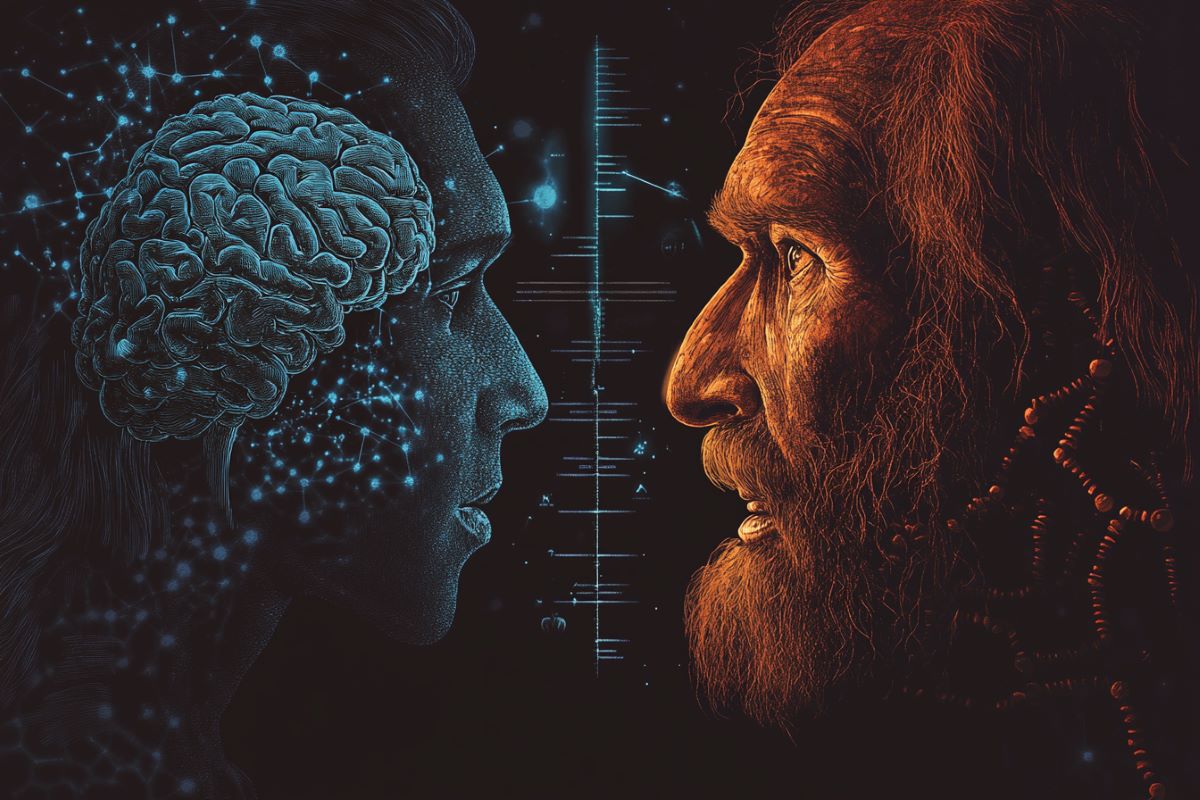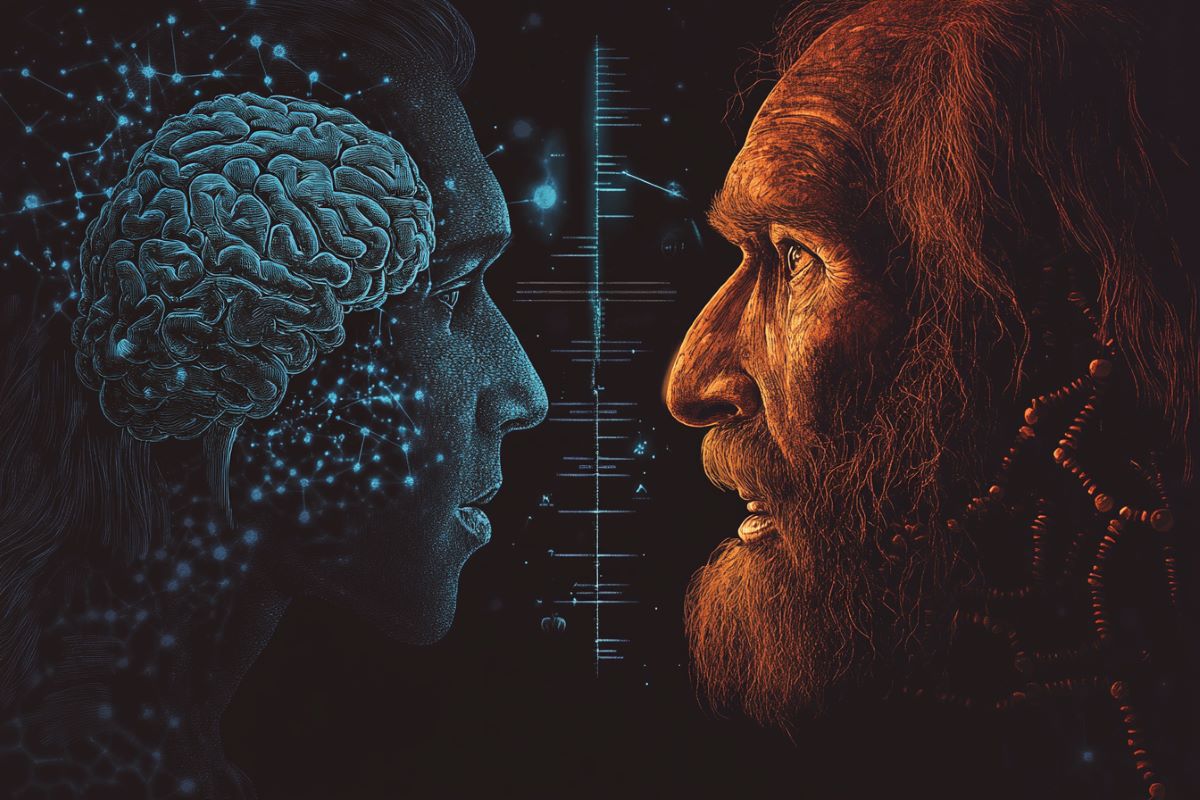
Overview: Recent studies indicate that a specific genetic variant in the NOVA1 protein may have significantly influenced the development of human speech. Researchers introduced this unique variant, exclusive to humans, into mice, resulting in changes to their vocalizations, highlighting its potential impact on vocal communication.
The findings revealed that neither Neanderthals nor Denisovans possessed this genetic variant, indicating its unique emergence in modern humans. Scientists hypothesize that this genetic alteration could have played a crucial role in the advancement of spoken language by affecting neural networks tied to vocalization.
An extensive examination of 650,058 human genomes demonstrated that nearly all contemporary humans carry this variant, underscoring its evolutionary importance. Subsequent research will examine its connections to language-related disorders and neurodevelopmental issues.
Essential Insights:
- Exclusive Human Variant: Modern humans possess a unique NOVA1 protein variant not found in Neanderthals or Denisovans.
- Changes in Vocalization: The introduction of the human variant into mice led to noticeable alterations in their vocal behaviors, suggesting its significance in the evolution of speech.
- Evolutionary Relevance: The widespread presence of this variant across modern humans indicates that it may have provided evolutionary advantages in communication.
Source: Rockefeller University
The origins of human language pose intriguing questions. Are we the only species capable of sophisticated speech?
Can modern humans effectively communicate complex ideas, like providing specific directions to a distant water source or describing the vivid colors of a sunset?
Our close relatives, such as Neanderthals, likely had the anatomical features necessary for speech production and the hearing of spoken language, along with a version of a gene associated with linguistic capability.

However, anatomical adaptations in human vocal tracts and complex neural pathways are distinct and essential for our linguistic capabilities.
The Rockefeller University researchers have unveiled fascinating genetic evidence suggesting that a NOVA1 protein variant exclusive to humans may have supported the emergence of spoken language.
In their publication in Nature Communications, the research team led by Robert B. Darnell showed that introducing the human-specific version of NOVA1—an RNA-binding protein critical for neural development—into mice resulted in modified vocalizations
The research confirmed the absence of this variant in both Neanderthals and Denisovans, ancient human species related to modern humans and with genetic contributions in many modern genomes.
“This gene signifies a major evolutionary shift in early modern humans and hints at the ancient roots of spoken language,” states Darnell, who leads the Laboratory of Molecular Neuro-Oncology.
“We propose that NOVA1 may serve as a foundational human ‘language gene,’ among several other genetic changes unique to our species.”
A Three-Decade Quest
While physiological adaptations of the vocal apparatus and complex neural syndromes empower language functions, the underlying genetics remain largely unexplored.
Among the proposed genetic drivers of language is FOXP2, which encodes a transcription factor that plays a pivotal role in early brain development. Individuals with mutations in this gene experience severe speech impairments, including difficulties synchronizing lip and mouth movements with sounds.
Humans display two amino acid alterations in FOXP2 that aren’t present in other primates or mammals; interestingly, Neanderthals had these modifications as well, suggesting that such changes emerged in a common ancestor of both human lineages. However, some findings surrounding FOXP2 remain contested, and its role in language acquisition is not fully understood.
Currently, NOVA1 has emerged as another candidate of interest. This gene yields a neuron-specific RNA-binding protein that is vital for brain development and muscle coordination, first identified by Darnell in 1993.
It exists in nearly identical forms across various species, yet humans have a distinctive variant characterized by a singular amino acid adjustment from isoleucine to valine (I197V) within the protein structure.
Besides I197V, other amino acid substitutions may also be crucial for brain development and could have significant roles in the progression of traits that facilitated the advancement, growth, and survival of Homo sapiens, as noted by first author Yoko Tajima, a postdoctoral researcher in Darnell’s lab.
Darnell, who has focused on the roles of RNA-binding proteins in gene expression, has investigated NOVA1 since its identification, including its links to a neurologic autoimmune disorder called POMA, which involves severe motor dysfunction.
Recently, researchers began to uncover connections between NOVA1 genetic variants and challenges in language and motor development.
“Understanding NOVA1 has been a lifelong endeavor for me,” he remarks.
The study, spearheaded by Tajima, employed CRISPR gene-editing technology to substitute the common NOVA1 variant in mice with the human-specific I197V mutation. Advanced techniques like cross-linking immunoprecipitation (CLIP) analysis were utilized to determine the RNA binding sites of NOVA1 within the midbrain of mice.
Discoveries Unveiled
Initial findings revealed that the human variant did not alter RNA binding associated with neural development or motor coordination, functioning similarly to the original protein it replaced.
What was its purpose? Additional findings provided some insight: the human variant influenced binding sites located at genes involved in vocalization.
“Remarkably, many of these vocalization-related genes were identified as NOVA1 binding targets, emphasizing its involvement in vocal communication,” explains Tajima.
“It was an unexpected and exciting moment for our team,” Darnell recalls, expressing their surprise at the results.
Collaborating with the Rockefeller Laboratory of Neurogenetics of Language, led by Erich D. Jarvis—who investigates the molecular mechanisms of vocal learning—the team spent the following years examining vocalization changes in mice of varying ages and contexts. They observed modifications in vocal patterns among both young male and female mice.
“Infant mice produce ultrasonic squeaks to their mothers, and language researchers categorize these sounds into four distinct ‘letters’—S, D, U, and M,” Darnell explains.
“When we compared the vocalizations of mice with the human-specific I197V variant to those of wild-type mice, we noticed meaningful differences in the ‘letters’ produced.”
Similar variations were evident when studying the mating calls of male adult mice in the presence of female mice in estrus. “Their vocalizations were noticeably distinct,” he adds. “These vocalization shifts could have profound implications for evolutionary processes.”
The Human Connection
The researchers then turned their attention to understanding the potential impact of I197V on human evolution. To ascertain its absence in our closest relatives—the Neanderthals and Denisovans—they analyzed genomic data from eight contemporary humans alongside three high-quality Neanderthal genomes and one Denisovan genome.
As anticipated, our ancient relatives, believed to have split from us around 250,000-300,000 years ago, shared the same NOVA1 protein found in all non-human animals.
Subsequently, they meticulously reviewed 650,058 modern human genomes cataloged in the dbSNP database, searching for any alternatives to the I197V variant.
Among these 650,058 genomes, all but six exhibited the human variant while the remaining six contained the archaic variant; however, due to de-identification, specifics regarding these individuals remain uncertain.
“Our research indicates that an ancestral group of modern humans originating in Africa developed the unique human variant I197V, which became prominent, likely due to its advantages in vocal communication,” Darnell suggests.
“This ancestral group subsequently migrated out of Africa and spread around the globe.”
Potential for Disorders and Diseases
In the future, Darnell’s lab plans to investigate the regulation of language functions by NOVA1, particularly concerning language and developmental disorders.
“We anticipate that insights into these issues will enhance our understanding of brain operations during vocal communication and how disruptions can lead to specific disorders,” Tajima notes.
Potential involvement in the neural pathways may be relevant for conditions that impede speech, such as nonverbal autism, as NOVA1 is linked to autism spectrum disorders.
Notably, the lab recently reported a case of a patient with NOVA1 haploinsufficiency experiencing a speech delay as part of their neurological symptoms.
Darnell adds, “Our discovery may hold clinical significance across various fronts, from developmental disorders to neurodegenerative diseases.”
About This Genetic and Evolutionary Neuroscience Research
Author: Katherine Fenz
Source: Rockefeller University
Contact: Katherine Fenz – Rockefeller University
Image: Credited to Neuroscience News
Original Research: Open access.
“A humanized NOVA1 splicing factor alters mouse vocal communications” by Robert B. Darnell et al. Nature Communications









